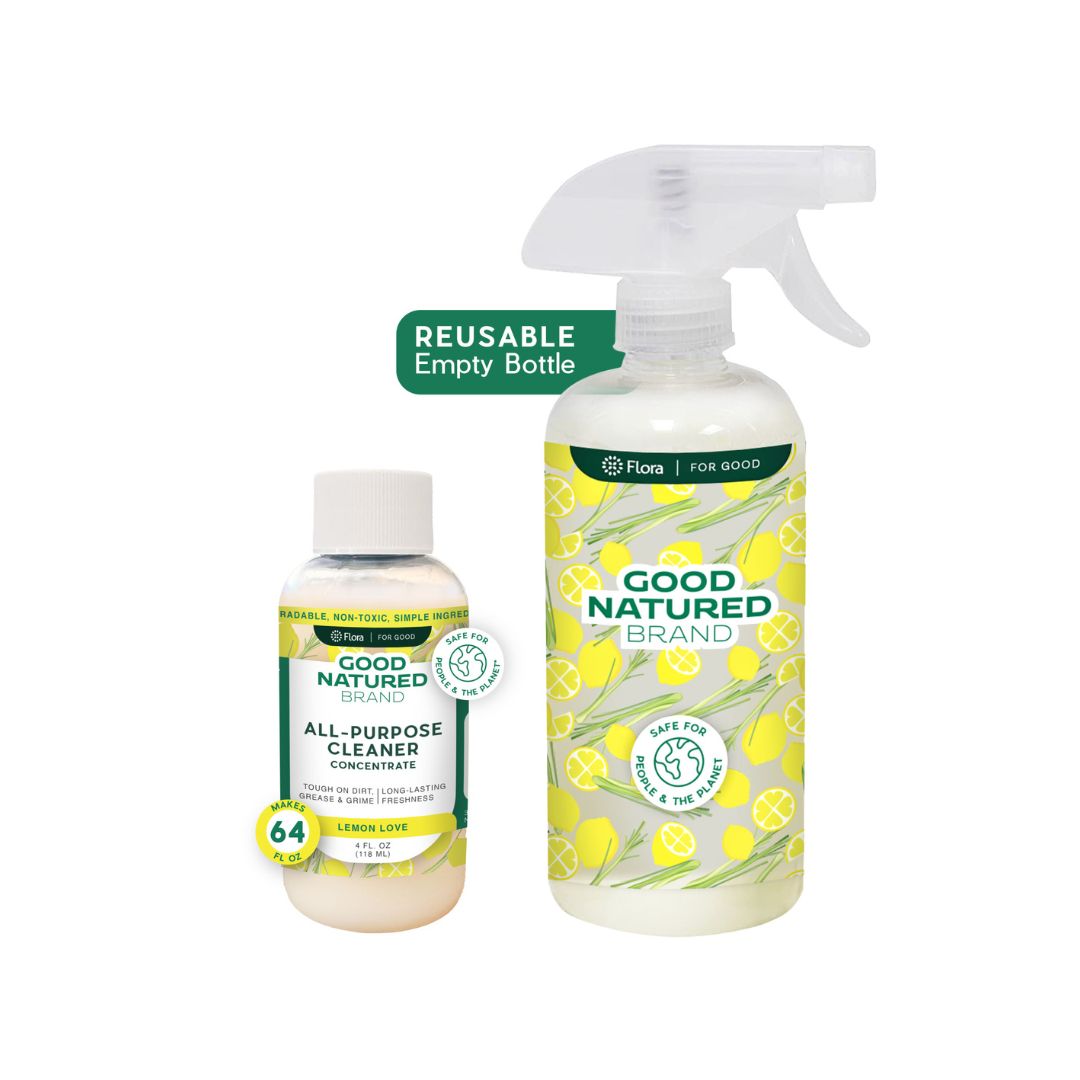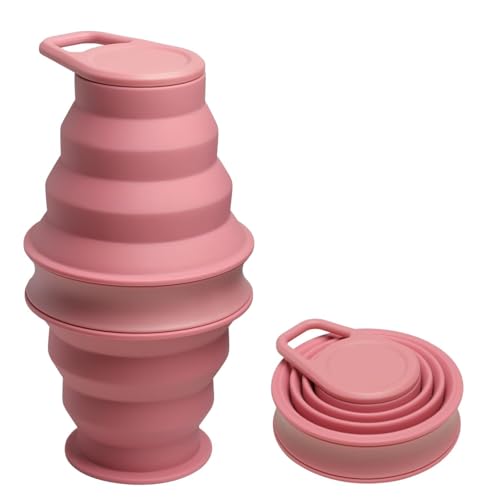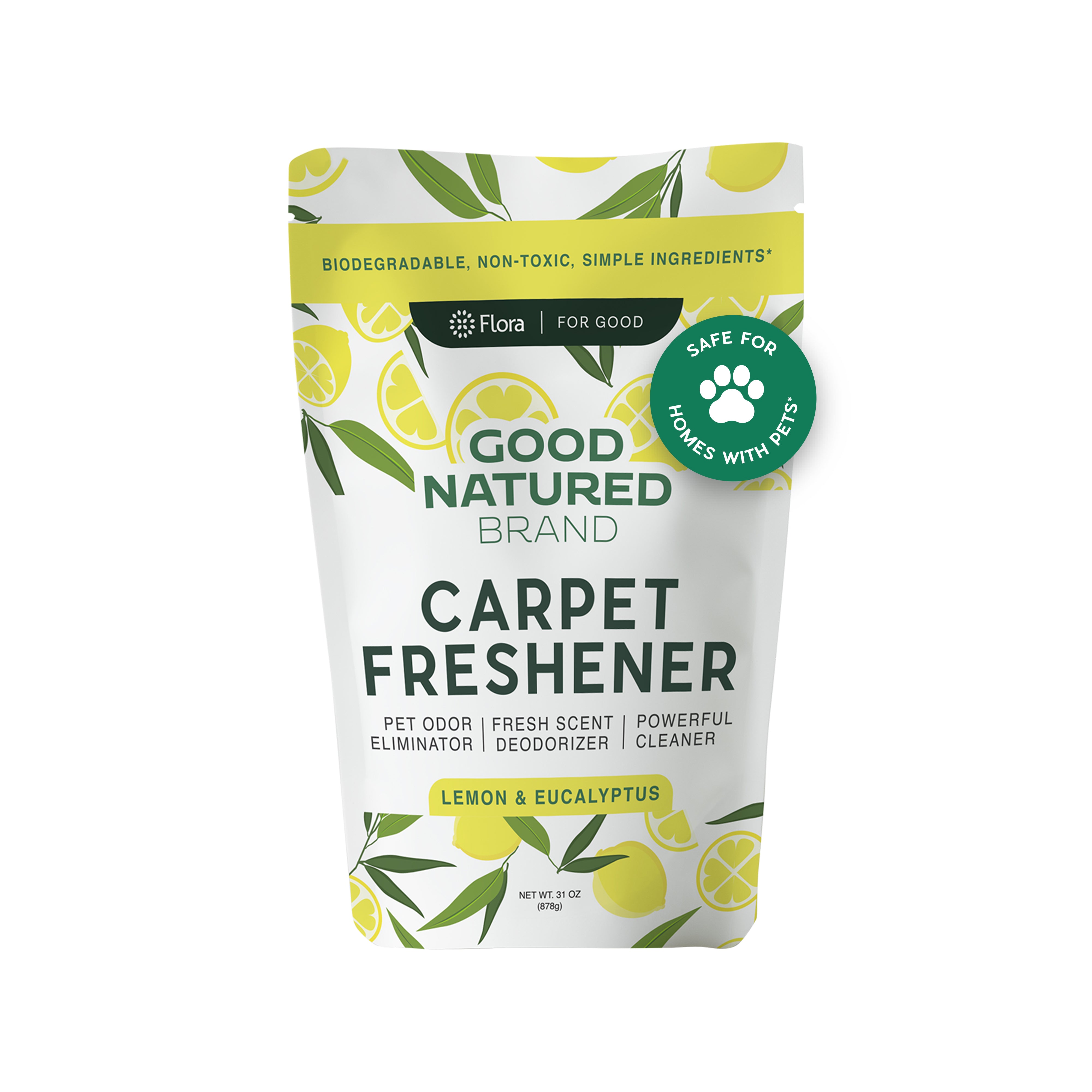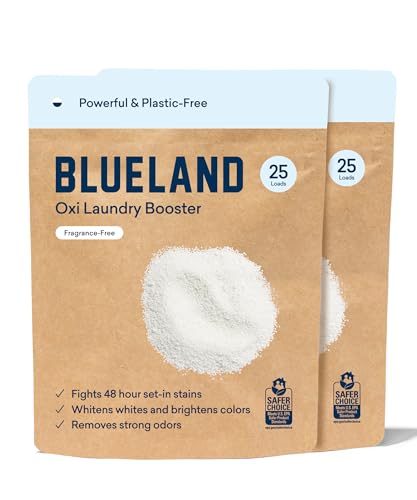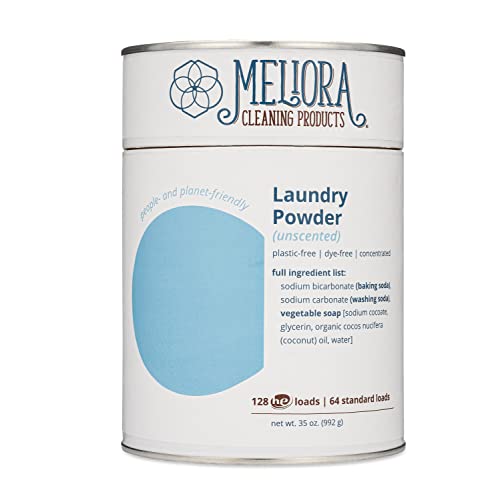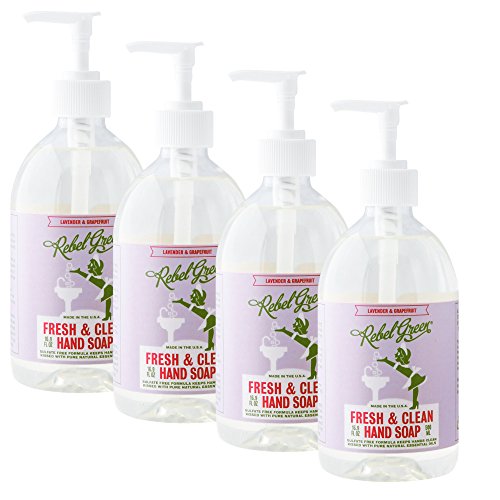
Rebel Green Hand Soap - Lavender & Grapefruit Aroma, Sulfate Free - 16.9oz, Pack of 4


Sodium Lauroyl Sarcosinate
Medium RiskSodium lauroyl sarcosinate is a synthetic skin conditioning agent commonly used in personal care products. It functions primarily as a surfactant and emulsifier, helping to improve the texture and application of formulations.
Sustai Insights
Sodium lauroyl sarcosinate offers functional benefits as an effective surfactant, enhancing the stability and texture of formulations while also being biodegradable, which contributes to sustainability. However, it has moderate use restrictions, and while it poses low health risks (cancer, allergies, and reproductive toxicity), it may still cause irritation in sensitive individuals. Environmental concerns are minimal, but regulatory bodies have noted its restricted use, leading to an overall medium risk assessment. Safe usage practices should be observed, and alternatives such as natural surfactants may be considered.
Citrus Grandis (Grapefruit) Peel Oil
Medium RiskCitrus grandis (grapefruit) peel oil is a volatile essential oil extracted from the peel of grapefruit. It is commonly used for its aromatic properties and as a flavoring agent in various products such as cosmetics and food. Its composition includes compounds like limonene and citral.
Sustai Insights
Citrus grandis (grapefruit) peel oil offers functional benefits such as fragrance enhancement and potential skin conditioning properties. However, it is associated with a high risk of allergic reactions and may enhance skin absorption of other substances. Regulatory restrictions apply, particularly regarding its use in products containing certain chemicals. Environmental concerns include its potential as a pollutant. Overall, it poses a medium risk, necessitating caution during use, especially for sensitive populations. Alternatives may include oils from less allergenic sources.
Citric Acid
Medium RiskCitric acid is an alpha hydroxy acid used in personal care products primarily for its role as a pH adjuster and natural preservative. It occurs naturally in citrus fruits and is commonly utilized in various formulations for its chelating properties and mild exfoliation benefits.
Sustai Insights
Citric acid offers functional benefits as an effective preservative and pH stabilizer, contributing to product longevity and stability. It is biodegradable and derived from renewable sources. Health risks are low, with minimal concerns regarding carcinogenicity, allergies, and reproductive toxicity. However, moderate use restrictions exist due to potential irritation at high concentrations. Environmental risks are limited, as citric acid is not known to accumulate in ecosystems. Regulatory agencies have no significant advisories against its use. Overall, it is assessed as a medium-risk ingredient, with safe usage practices recommended and alternatives available.
Phenoxyethanol
Medium RiskPhenoxyethanol is a preservative used in cosmetics and personal care products to prevent microbial growth and extend shelf life. It is commonly found in formulations such as lotions, creams, and serums.
Sustai Insights
Phenoxyethanol serves effectively as a preservative, ensuring product stability and safety by inhibiting microbial growth. It is considered to have low health risks regarding carcinogenicity, allergies, and reproductive toxicity. However, moderate use restrictions exist, and regulatory bodies have advised caution in specific applications. Environmental concerns include its potential as a pollutant, although it is not highly bioaccumulative. Overall, the ingredient presents a medium risk level, with safe usage practices recommended and alternative preservatives available for those seeking greener options.
Tocopheryl Acetate
Medium RiskTocopheryl acetate is a chemical compound that serves primarily as a form of Vitamin E. It is used in cosmetic and personal care products for its antioxidant properties and to enhance skin stability and moisture.
Sustai Insights
Tocopheryl acetate is valued for its functional benefits, including acting as an antioxidant and skin conditioning agent. It is generally considered to have low carcinogenicity and reproductive toxicity risk, although it poses a moderate concern for allergies. Environmental risks are minimal, with no significant pollutant or bioaccumulation potential noted. Regulatory bodies have not imposed significant restrictions. Safe usage practices should be followed, particularly regarding enhanced skin absorption. Alternatives like natural Vitamin E may provide similar benefits with potentially lower allergenic properties. Overall, this ingredient presents a medium risk assessment.
Lauryl Glucoside
Low RiskLauryl glucoside is a sugar- and lipid-based surfactant commonly used in personal care products. It functions as a mild cleanser and emulsifier, helping to solubilize oils and dirt while contributing to product texture and stability.
Sustai Insights
Lauryl glucoside offers functional benefits as a gentle surfactant that effectively cleanses without harshness, and it is biodegradable, indicating sustainable sourcing. Health risks are minimal, with low concerns for carcinogenicity and low to moderate potential for irritation or allergies. Environmental risks are also low, with no significant pollutant or bioaccumulation concerns. Regulatory bodies have not issued specific warnings. Overall, it is assessed as low risk, suitable for use in various formulations, making it a viable option for those seeking safer alternatives.
Sodium Cocoamphodiacetate
Low RiskSodium cocoamphodiacetate is an amphoteric surfactant derived from coconut oil. It is commonly used in personal care products for its ability to function as a mild cleansing and foaming agent, helping to create lather and improve the texture of formulations.
Sustai Insights
Sodium cocoamphodiacetate is effective in cleansing and providing mildness in formulations, contributing to user comfort. It is biodegradable and derived from renewable resources, which enhances its sustainability profile. Health risks are low, with no significant concerns regarding carcinogenicity, allergies, or reproductive toxicity. Environmental risks are minimal, with no pollutant or bioaccumulation potential noted. Regulatory assessments indicate no restrictions in major regions. Overall, this ingredient presents a low risk for both health and the environment, making it a suitable option in cosmetic formulations.
Lavandula Hybrida Oil
Low RiskLavandula hybrida oil is an essential oil obtained from the hybrid lavender plant, known for its aromatic properties and use in various cosmetic and therapeutic applications. It is commonly used for its fragrance and potential calming effects in personal care products.
Sustai Insights
Lavandula hybrida oil offers functional benefits as a fragrance and may have mild calming effects. It is sustainably sourced and typically presents low risks for carcinogenicity, allergies, and reproductive toxicity. However, it carries low to moderate concerns about endocrine disruption. Environmental impacts are minimal, and it is not currently subject to significant regulatory restrictions. Overall, the risk level associated with this ingredient is low, making it a relatively safe option in product formulations.
Methyl Gluceth
Low RiskMethyl gluceth is a synthetic compound used primarily as a humectant and skin-conditioning agent in cosmetic formulations. It helps retain moisture and improve the texture of products, making it suitable for various personal care applications.
Sustai Insights
Methyl gluceth offers functional benefits as an effective humectant, contributing to skin hydration. It is not associated with significant health risks, as concerns regarding carcinogenicity, allergies, and reproductive toxicity are low. Environmentally, it presents minimal hazards and is not known to bioaccumulate. Regulatory agencies have not issued restrictions on its use, supporting its low-risk classification. Safe usage practices should be followed, and while alternatives exist, methyl gluceth remains a viable option in formulations.
Sodium Lauroyl Lactylate
Low RiskSodium lauroyl lactylate is a sodium salt of lauric acid and lactyl lactate, primarily used in cosmetic formulations as an emulsifier and skin conditioning agent. It helps to enhance the texture and stability of products while also promoting skin feel.
Sustai Insights
Sodium lauroyl lactylate is valued for its emulsifying properties, improving product texture and stability. It is considered biodegradable and sustainably sourced, contributing to eco-friendliness. Health risks are low, with minimal concerns regarding carcinogenicity, allergenic potential, and reproductive toxicity. Environmental risks are also low, with no significant bioaccumulation or pollution potential identified. Regulatory bodies have not imposed restrictions on its use. Overall, this ingredient presents a low risk profile, making it a suitable choice for cosmetic formulations.
Peg 120 Methyl Glucose Dioleate
Low RiskPEG-120 methyl glucose dioleate is a polyethylene glycol derivative of methyl glucose and oleic acid, primarily used as an emulsifier and surfactant in cosmetic and personal care products. It helps to stabilize formulations by allowing water and oils to mix effectively.
Sustai Insights
PEG-120 methyl glucose dioleate serves effectively as an emulsifier, enhancing product stability and texture. It is low-risk concerning carcinogenicity, allergies, and reproductive toxicity, according to regulatory assessments. However, concerns about contamination exist, necessitating cautious sourcing. Environmentally, it poses low risks, lacking bioaccumulation potential. Regulatory bodies have not issued significant warnings, supporting its low-risk classification overall. Safe usage practices should be followed, and alternatives may include plant-based emulsifiers for those seeking more sustainable options.
Water
Low RiskWater is a clear, colorless liquid essential for various biological processes. It serves as a solvent in formulations, facilitating the dissolution of other ingredients and enhancing product texture and application. Additionally, water plays a crucial role in hydration and is a key component in many cosmetic and personal care products.
Sustai Insights
Water is an effective solvent and hydrator, contributing to the texture and efficacy of formulations. It is biodegradable and generally regarded as safe, with low concerns regarding carcinogenicity, allergies, and reproductive toxicity. However, excessive water usage can lead to environmental concerns, particularly regarding resource depletion. Regulatory bodies do not impose restrictions on water use in cosmetics. Overall, the risks associated with water are low, making it a safe and essential ingredient.
Ethylhexylglycerin
Low RiskEthylhexylglycerin is a glyceryl ether utilized primarily as a skin-conditioning agent and preservative in cosmetic formulations. It enhances the efficacy of preservatives and serves as a humectant, helping to retain moisture in the skin. This ingredient is commonly found in various personal care products.
Sustai Insights
Ethylhexylglycerin offers functional benefits as an effective preservative and skin-conditioning agent, contributing to product longevity and moisture retention. Health risks are generally low, with minor concerns regarding allergic contact dermatitis and irritant potential. Environmentally, it poses minimal risks, not being recognized as a pollutant or bioaccumulative. Regulatory bodies have imposed few restrictions, indicating its safety for use. Overall, its risk level is assessed as low, making it a viable option in cosmetic formulations. For those seeking alternatives, ingredients like propanediol may serve similar functions with potentially lower irritation profiles.
Aloe Barbadensis (Aloe Vera) Leaf Juice
Low RiskAloe barbadensis (aloe vera) leaf juice is derived from the succulent aloe vera plant, known for its hydrating and soothing properties. It is commonly used in cosmetic formulations for its moisturizing effects and is often included in products aimed at skin care and healing.
Sustai Insights
Aloe vera leaf juice offers functional benefits as a moisturizer and skin soothing agent, while being sustainably sourced and biodegradable. Health risks are low, with minimal concerns regarding carcinogenicity, allergies, and reproductive toxicity. Environmental impact is also low, with no significant pollutants identified. Regulatory agencies impose few restrictions. Overall, the ingredient poses a low risk, making it a favorable choice in cosmetic formulations.
Lauryl Glucoside
Low RiskLauryl glucoside is a sugar- and lipid-based surfactant commonly used in personal care products. It functions as a mild cleanser and emulsifier, helping to solubilize oils and dirt while contributing to product texture and stability.
Sustai Insights
Lauryl glucoside offers functional benefits as a gentle surfactant that effectively cleanses without harshness, and it is biodegradable, indicating sustainable sourcing. Health risks are minimal, with low concerns for carcinogenicity and low to moderate potential for irritation or allergies. Environmental risks are also low, with no significant pollutant or bioaccumulation concerns. Regulatory bodies have not issued specific warnings. Overall, it is assessed as low risk, suitable for use in various formulations, making it a viable option for those seeking safer alternatives.
Sodium Cocoamphodiacetate
Low RiskSodium cocoamphodiacetate is an amphoteric surfactant derived from coconut oil. It is commonly used in personal care products for its ability to function as a mild cleansing and foaming agent, helping to create lather and improve the texture of formulations.
Sustai Insights
Sodium cocoamphodiacetate is effective in cleansing and providing mildness in formulations, contributing to user comfort. It is biodegradable and derived from renewable resources, which enhances its sustainability profile. Health risks are low, with no significant concerns regarding carcinogenicity, allergies, or reproductive toxicity. Environmental risks are minimal, with no pollutant or bioaccumulation potential noted. Regulatory assessments indicate no restrictions in major regions. Overall, this ingredient presents a low risk for both health and the environment, making it a suitable option in cosmetic formulations.
Lavandula Hybrida Oil
Low RiskLavandula hybrida oil is an essential oil obtained from the hybrid lavender plant, known for its aromatic properties and use in various cosmetic and therapeutic applications. It is commonly used for its fragrance and potential calming effects in personal care products.
Sustai Insights
Lavandula hybrida oil offers functional benefits as a fragrance and may have mild calming effects. It is sustainably sourced and typically presents low risks for carcinogenicity, allergies, and reproductive toxicity. However, it carries low to moderate concerns about endocrine disruption. Environmental impacts are minimal, and it is not currently subject to significant regulatory restrictions. Overall, the risk level associated with this ingredient is low, making it a relatively safe option in product formulations.
Sodium Lauroyl Sarcosinate
Medium RiskSodium lauroyl sarcosinate is a synthetic skin conditioning agent commonly used in personal care products. It functions primarily as a surfactant and emulsifier, helping to improve the texture and application of formulations.
Sustai Insights
Sodium lauroyl sarcosinate offers functional benefits as an effective surfactant, enhancing the stability and texture of formulations while also being biodegradable, which contributes to sustainability. However, it has moderate use restrictions, and while it poses low health risks (cancer, allergies, and reproductive toxicity), it may still cause irritation in sensitive individuals. Environmental concerns are minimal, but regulatory bodies have noted its restricted use, leading to an overall medium risk assessment. Safe usage practices should be observed, and alternatives such as natural surfactants may be considered.
Methyl Gluceth
Low RiskMethyl gluceth is a synthetic compound used primarily as a humectant and skin-conditioning agent in cosmetic formulations. It helps retain moisture and improve the texture of products, making it suitable for various personal care applications.
Sustai Insights
Methyl gluceth offers functional benefits as an effective humectant, contributing to skin hydration. It is not associated with significant health risks, as concerns regarding carcinogenicity, allergies, and reproductive toxicity are low. Environmentally, it presents minimal hazards and is not known to bioaccumulate. Regulatory agencies have not issued restrictions on its use, supporting its low-risk classification. Safe usage practices should be followed, and while alternatives exist, methyl gluceth remains a viable option in formulations.
Sodium Lauroyl Lactylate
Low RiskSodium lauroyl lactylate is a sodium salt of lauric acid and lactyl lactate, primarily used in cosmetic formulations as an emulsifier and skin conditioning agent. It helps to enhance the texture and stability of products while also promoting skin feel.
Sustai Insights
Sodium lauroyl lactylate is valued for its emulsifying properties, improving product texture and stability. It is considered biodegradable and sustainably sourced, contributing to eco-friendliness. Health risks are low, with minimal concerns regarding carcinogenicity, allergenic potential, and reproductive toxicity. Environmental risks are also low, with no significant bioaccumulation or pollution potential identified. Regulatory bodies have not imposed restrictions on its use. Overall, this ingredient presents a low risk profile, making it a suitable choice for cosmetic formulations.
Peg 120 Methyl Glucose Dioleate
Low RiskPEG-120 methyl glucose dioleate is a polyethylene glycol derivative of methyl glucose and oleic acid, primarily used as an emulsifier and surfactant in cosmetic and personal care products. It helps to stabilize formulations by allowing water and oils to mix effectively.
Sustai Insights
PEG-120 methyl glucose dioleate serves effectively as an emulsifier, enhancing product stability and texture. It is low-risk concerning carcinogenicity, allergies, and reproductive toxicity, according to regulatory assessments. However, concerns about contamination exist, necessitating cautious sourcing. Environmentally, it poses low risks, lacking bioaccumulation potential. Regulatory bodies have not issued significant warnings, supporting its low-risk classification overall. Safe usage practices should be followed, and alternatives may include plant-based emulsifiers for those seeking more sustainable options.
Citrus Grandis (Grapefruit) Peel Oil
Medium RiskCitrus grandis (grapefruit) peel oil is a volatile essential oil extracted from the peel of grapefruit. It is commonly used for its aromatic properties and as a flavoring agent in various products such as cosmetics and food. Its composition includes compounds like limonene and citral.
Sustai Insights
Citrus grandis (grapefruit) peel oil offers functional benefits such as fragrance enhancement and potential skin conditioning properties. However, it is associated with a high risk of allergic reactions and may enhance skin absorption of other substances. Regulatory restrictions apply, particularly regarding its use in products containing certain chemicals. Environmental concerns include its potential as a pollutant. Overall, it poses a medium risk, necessitating caution during use, especially for sensitive populations. Alternatives may include oils from less allergenic sources.
Water
Low RiskWater is a clear, colorless liquid essential for various biological processes. It serves as a solvent in formulations, facilitating the dissolution of other ingredients and enhancing product texture and application. Additionally, water plays a crucial role in hydration and is a key component in many cosmetic and personal care products.
Sustai Insights
Water is an effective solvent and hydrator, contributing to the texture and efficacy of formulations. It is biodegradable and generally regarded as safe, with low concerns regarding carcinogenicity, allergies, and reproductive toxicity. However, excessive water usage can lead to environmental concerns, particularly regarding resource depletion. Regulatory bodies do not impose restrictions on water use in cosmetics. Overall, the risks associated with water are low, making it a safe and essential ingredient.
Citric Acid
Medium RiskCitric acid is an alpha hydroxy acid used in personal care products primarily for its role as a pH adjuster and natural preservative. It occurs naturally in citrus fruits and is commonly utilized in various formulations for its chelating properties and mild exfoliation benefits.
Sustai Insights
Citric acid offers functional benefits as an effective preservative and pH stabilizer, contributing to product longevity and stability. It is biodegradable and derived from renewable sources. Health risks are low, with minimal concerns regarding carcinogenicity, allergies, and reproductive toxicity. However, moderate use restrictions exist due to potential irritation at high concentrations. Environmental risks are limited, as citric acid is not known to accumulate in ecosystems. Regulatory agencies have no significant advisories against its use. Overall, it is assessed as a medium-risk ingredient, with safe usage practices recommended and alternatives available.
Phenoxyethanol
Medium RiskPhenoxyethanol is a preservative used in cosmetics and personal care products to prevent microbial growth and extend shelf life. It is commonly found in formulations such as lotions, creams, and serums.
Sustai Insights
Phenoxyethanol serves effectively as a preservative, ensuring product stability and safety by inhibiting microbial growth. It is considered to have low health risks regarding carcinogenicity, allergies, and reproductive toxicity. However, moderate use restrictions exist, and regulatory bodies have advised caution in specific applications. Environmental concerns include its potential as a pollutant, although it is not highly bioaccumulative. Overall, the ingredient presents a medium risk level, with safe usage practices recommended and alternative preservatives available for those seeking greener options.
Ethylhexylglycerin
Low RiskEthylhexylglycerin is a glyceryl ether utilized primarily as a skin-conditioning agent and preservative in cosmetic formulations. It enhances the efficacy of preservatives and serves as a humectant, helping to retain moisture in the skin. This ingredient is commonly found in various personal care products.
Sustai Insights
Ethylhexylglycerin offers functional benefits as an effective preservative and skin-conditioning agent, contributing to product longevity and moisture retention. Health risks are generally low, with minor concerns regarding allergic contact dermatitis and irritant potential. Environmentally, it poses minimal risks, not being recognized as a pollutant or bioaccumulative. Regulatory bodies have imposed few restrictions, indicating its safety for use. Overall, its risk level is assessed as low, making it a viable option in cosmetic formulations. For those seeking alternatives, ingredients like propanediol may serve similar functions with potentially lower irritation profiles.
Tocopheryl Acetate
Medium RiskTocopheryl acetate is a chemical compound that serves primarily as a form of Vitamin E. It is used in cosmetic and personal care products for its antioxidant properties and to enhance skin stability and moisture.
Sustai Insights
Tocopheryl acetate is valued for its functional benefits, including acting as an antioxidant and skin conditioning agent. It is generally considered to have low carcinogenicity and reproductive toxicity risk, although it poses a moderate concern for allergies. Environmental risks are minimal, with no significant pollutant or bioaccumulation potential noted. Regulatory bodies have not imposed significant restrictions. Safe usage practices should be followed, particularly regarding enhanced skin absorption. Alternatives like natural Vitamin E may provide similar benefits with potentially lower allergenic properties. Overall, this ingredient presents a medium risk assessment.
Aloe Barbadensis (Aloe Vera) Leaf Juice
Low RiskAloe barbadensis (aloe vera) leaf juice is derived from the succulent aloe vera plant, known for its hydrating and soothing properties. It is commonly used in cosmetic formulations for its moisturizing effects and is often included in products aimed at skin care and healing.
Sustai Insights
Aloe vera leaf juice offers functional benefits as a moisturizer and skin soothing agent, while being sustainably sourced and biodegradable. Health risks are low, with minimal concerns regarding carcinogenicity, allergies, and reproductive toxicity. Environmental impact is also low, with no significant pollutants identified. Regulatory agencies impose few restrictions. Overall, the ingredient poses a low risk, making it a favorable choice in cosmetic formulations.
Experience the refreshing sensation of Rebel Green Lavender & Grapefruit Scent Liquid Hand Soap. This sulfate-free formula not only cleanses but also nourishes your skin with every wash, making it a perfect choice for health-conscious consumers.
- Gentle Cleansing: Effectively removes dirt and impurities without harsh sulfates, ensuring your skin feels soft and smooth.
- Invigorating Aroma: The delightful blend of lavender and grapefruit uplifts your mood, transforming handwashing into a revitalizing experience.
- Eco-Friendly Choice: Packaged sustainably, this hand soap aligns with environmentally conscious values, reducing plastic waste.
- Versatile Use: Ideal for kitchen or bathroom, it keeps hands clean and fragrant throughout the day, especially after meals.
- Family-Friendly: Safe for the entire family, it promotes healthy hygiene habits while being kind to sensitive skin.
Enjoy the harmony of cleanliness and care with every wash, knowing you’re making a responsible choice for your health and the planet.
Subscribe & Save with Sustai
- Best Price Guarantee: Always enjoy the lowest prices on sustainable home essentials.
- No Surprises: We’ll notify you before shipping. No hidden fees, ever.
- You’re in Charge: Change, pause, or cancel your subscription anytime with ease.
- Eco-Friendly Deliveries: Our grouped shipments mean less packaging and lower emissions.
Join us on a sustainable journey. Special offers for a limited time! Prices and promotions may change.
Recommended Products
Experience the refreshing sensation of Rebel Green Lavender & Grapefruit Scent Liquid Hand Soap. This sulfate-free formula not only cleanses but also nourishes your skin with every wash, making it a perfect choice for health-conscious consumers.
- Gentle Cleansing: Effectively removes dirt and impurities without harsh sulfates, ensuring your skin feels soft and smooth.
- Invigorating Aroma: The delightful blend of lavender and grapefruit uplifts your mood, transforming handwashing into a revitalizing experience.
- Eco-Friendly Choice: Packaged sustainably, this hand soap aligns with environmentally conscious values, reducing plastic waste.
- Versatile Use: Ideal for kitchen or bathroom, it keeps hands clean and fragrant throughout the day, especially after meals.
- Family-Friendly: Safe for the entire family, it promotes healthy hygiene habits while being kind to sensitive skin.
Enjoy the harmony of cleanliness and care with every wash, knowing you’re making a responsible choice for your health and the planet.

You can have at most 2 Sustainable Steals products in your cart
Customer Reviews
Customers’ View
Customers appreciate the gentle and effective cleansing properties of the Rebel Green Lavender & Grapefruit Scent Hand Soap, noting it is suitable for sensitive skin without causing dryness or irritation. Many users highlight the refreshing and subtle scent, with comments reflecting satisfaction such as, "The scent is amazing and the soap is gentle." However, there have been some concerns regarding bottle quality, as several customers reported issues with damaged packaging upon arrival. Overall, the eco-friendly formula and cruelty-free nature resonate well with environmentally conscious consumers, making this hand soap a desirable choice for those prioritizing health and sustainability in their personal care products.
AI-generated from the text of customer reviewsThis product has no reviews yet.
